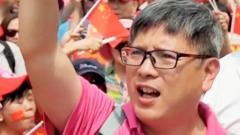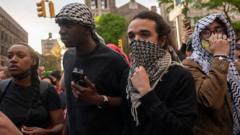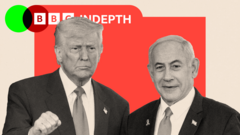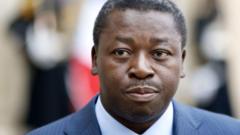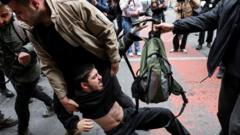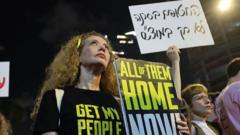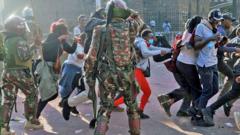A rally in Belgrade saw tens of thousands of supporters of Serbian President Aleksandar Vucic come together, yet the attendance paled in comparison to last month’s significant anti-government protests. The backdrop of political turmoil arose from a tragic railway station incident that ignited public outrage over alleged government corruption.
Pro-Government Rally Fails to Match Attendance of Recent Anti-Government Protests in Serbia
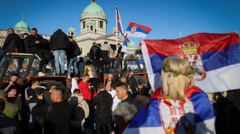
Pro-Government Rally Fails to Match Attendance of Recent Anti-Government Protests in Serbia
Thousands gathered in Belgrade to support President Vucic amidst ongoing unrest, but turnout fell short of past anti-government mobilizations.
Tens of thousands of supporters rallied in Belgrade to show their backing for Serbian President Aleksandar Vucic, yet turnout figures reported by monitoring organizations indicate only about 55,000 gathered outside the National Assembly. This turnout starkly contrasts with the massive anti-government protests held just weeks earlier, which saw an estimated 325,000 participants.
The recent public demonstrations have been fueled by anger following the collapse of a railway station canopy in Novi Sad last November, resulting in the deaths of 15 individuals. Many Serbians have associated the tragedy with accusations of corruption and neglect by Vucic’s Progressive Party.
Promoting the rally as a kickoff for a new initiative titled "Movement for the People and the State," Vucic proclaimed the mission was to protect Serbia from forces he argued were seeking to undermine the nation. During his speech, Vucic criticized student-led protests, alleging that participants were funded by "foreign intelligence agencies" aiming to destabilize Serbia. He called for prosecutors to restore order while labeling national broadcaster RTS as a participant in attempts at a “colour revolution.”
Following the tragic incident, the government faced increasing scrutiny over its governance, with protests gaining momentum under slogans like "corruption kills." These gatherings attracted thousands, resulting in significant public dissent against Vucic, despite his dismissive stance regarding the protests and a refusal to resign.
As the government seeks to control the narrative, the stark difference in rally attendance highlights the growing divisions within Serbian society as Vucic navigates the ongoing unrest sparked by deep-seated frustrations with corruption and accountability.

